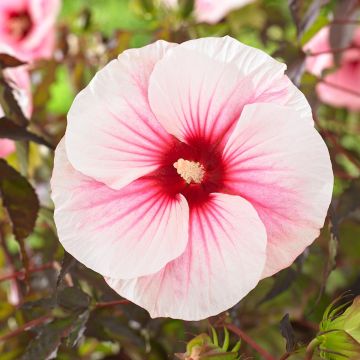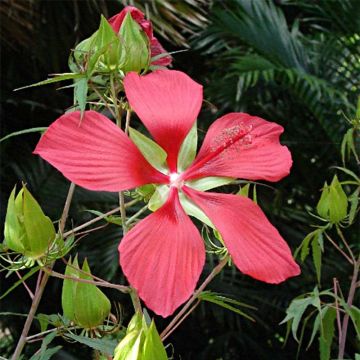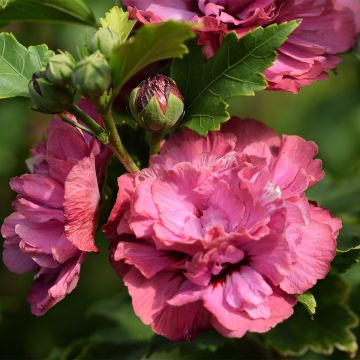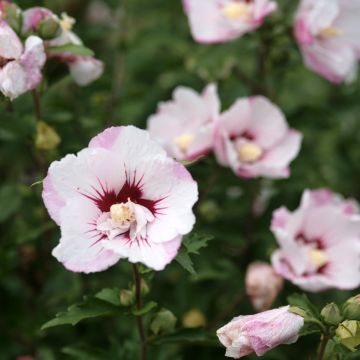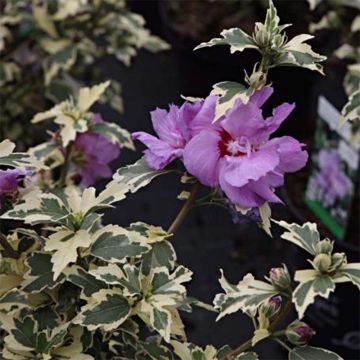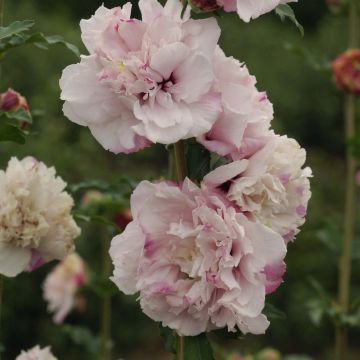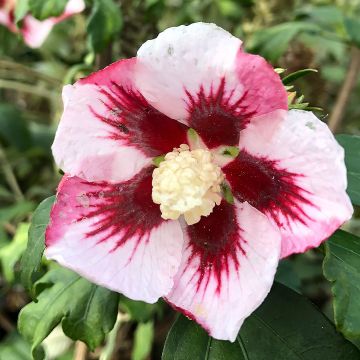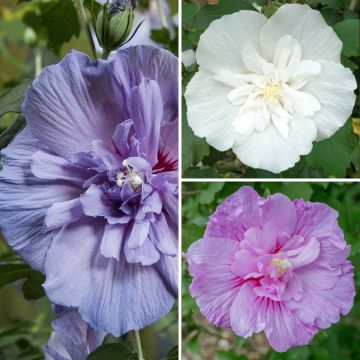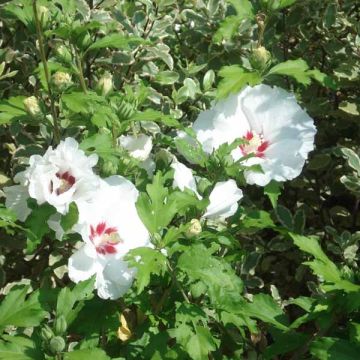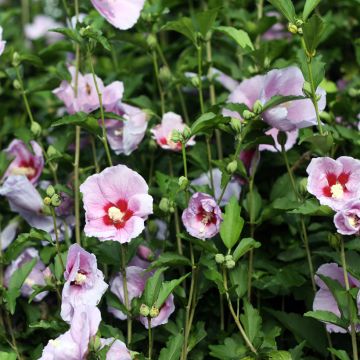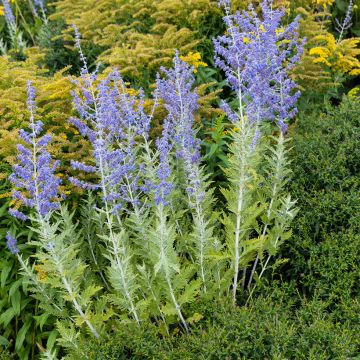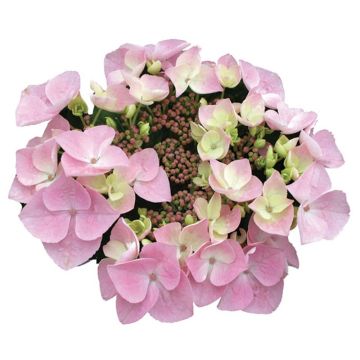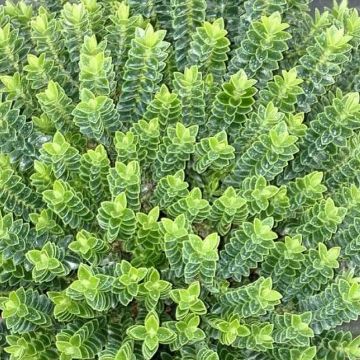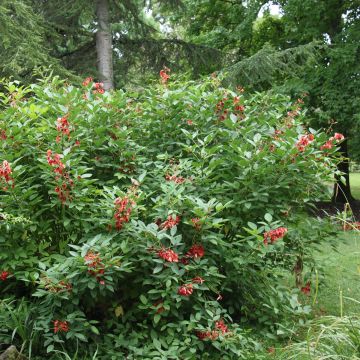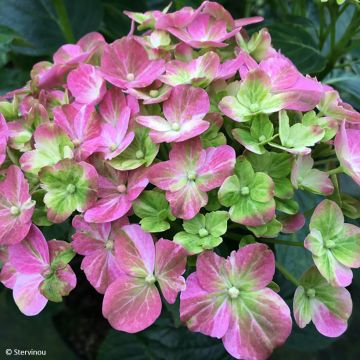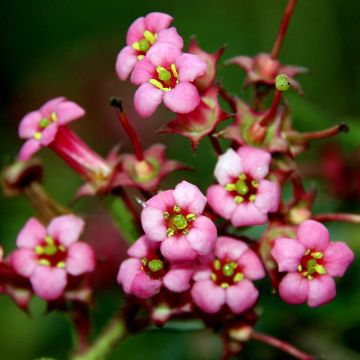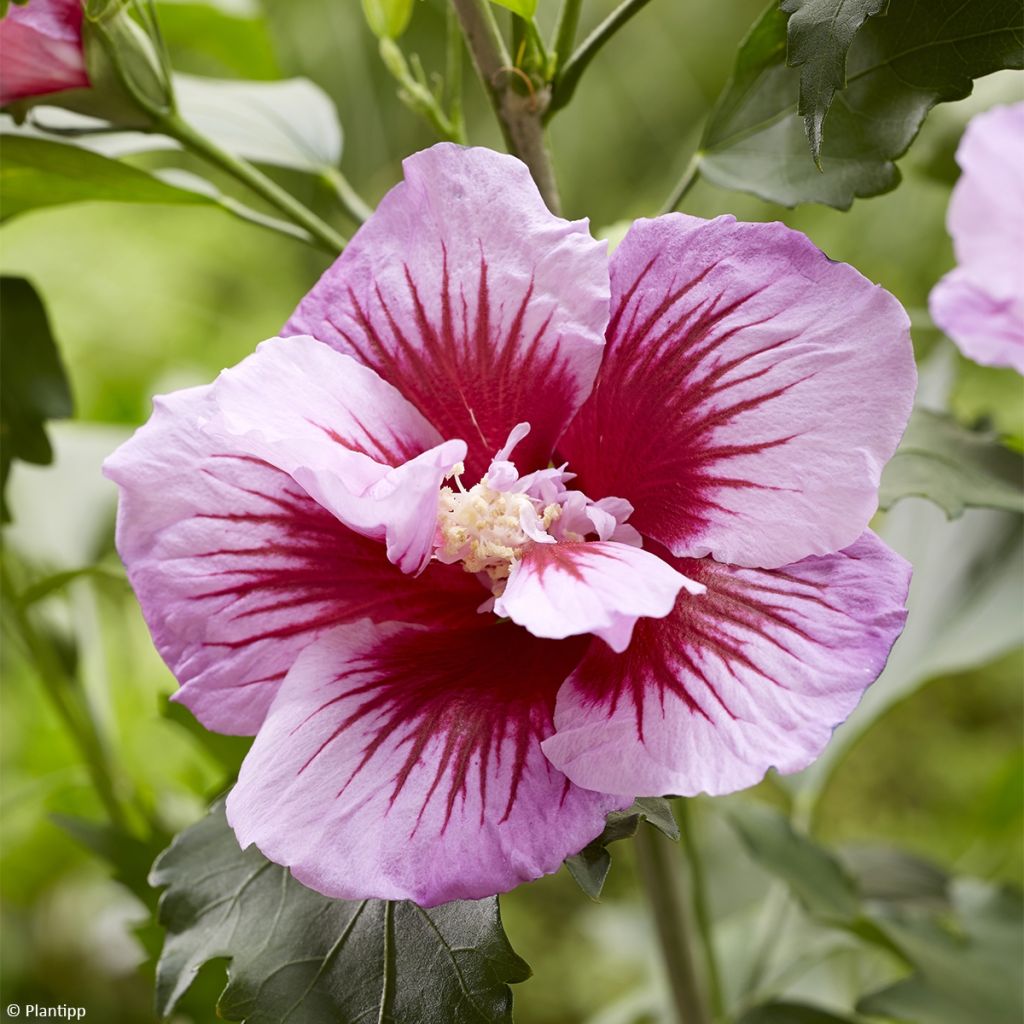

Hibiscus syriacus Flower Tower Purple Gandini Santiago - Althea rose à coeur rouge
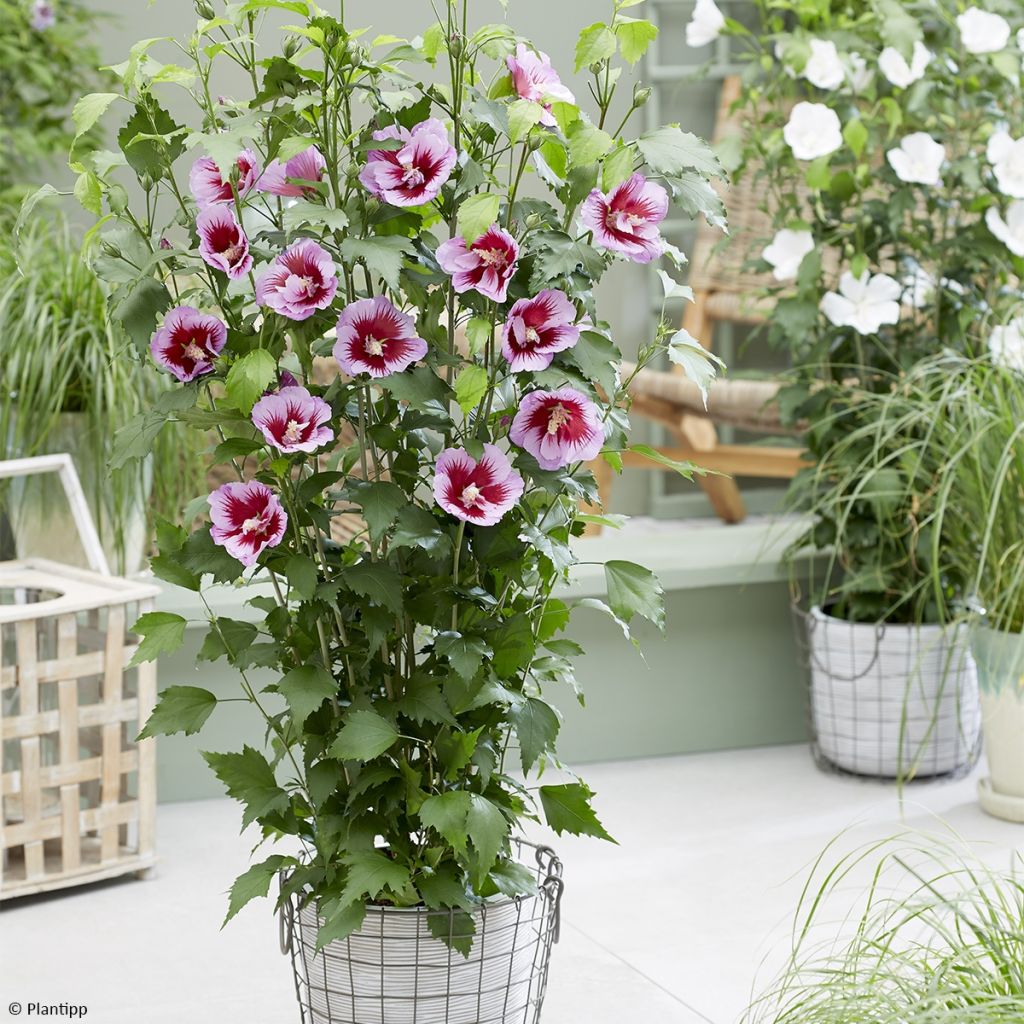

Hibiscus syriacus Flower Tower Purple Gandini Santiago - Althea rose à coeur rouge
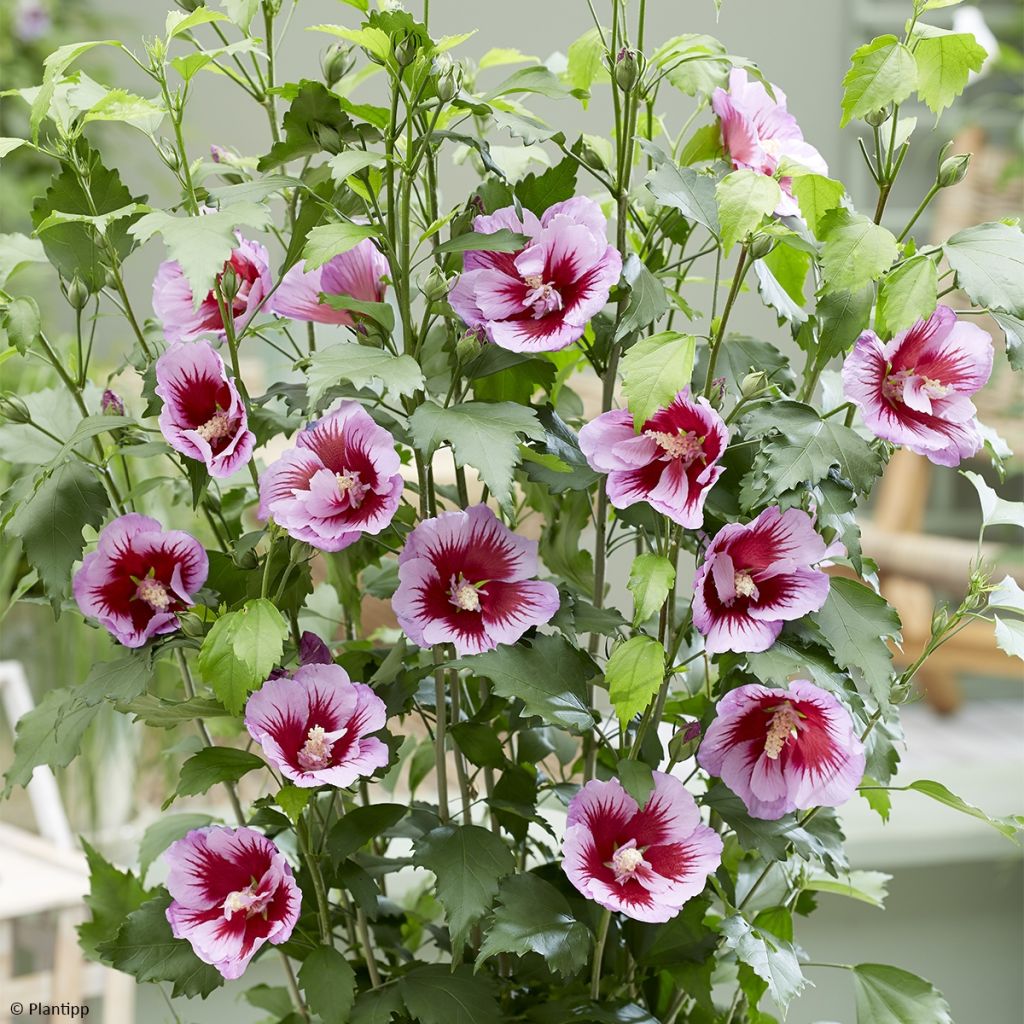

Hibiscus syriacus Flower Tower Purple Gandini Santiago - Althea rose à coeur rouge
Hibiscus syriacus Flower Tower Purple - Rose of Sharon
Hibiscus syriacus Flower Tower Purple 'Gandini Santiago'
Common Hibiscus, Rose of Sharon, Syrian ketmia, St Joseph's rod, Garden Hibiscus
Order 101641391 dated 27/02/2024, the Hibiscus syriacus Flower Tower Purple did not arrive in the order. Instead, a small fig tree that I did not order arrived. I sent photos and they told me they would send me my hibiscus again. I am still waiting as of 31/03/2024. If they do not send it to me, they should issue a cheque to my account. Shameful.
ESPERANZA, 31/03/2024
This item cannot be shipped to the selected country
Delivery charge from €5.90
Delivery to Corse prohibited
More information
Delivery charge from €5.90
Delivery to Corse prohibited
More information
Schedule delivery date,
and select date in basket
This plant carries a 24 months recovery warranty
More information
We guarantee the quality of our plants for a full growing cycle, and will replace at our expense any plant that fails to recover under normal climatic and planting conditions.
From €5.90 for pickup delivery and €6.90 for home delivery
Express home delivery from €8.90.
Delivery to Corse prohibited: UE law prohibits the import of this plant from mainland France to Corse as part of the fight against Xylella fastidiosa. Please accept our sincere apologies.
More information
Does this plant fit my garden?
Set up your Plantfit profile →
Description
The Hibiscus syriacus 'Flower Tower Purple' Gandini Santiago is a unique type of hibiscus with a columnar habit, making it an excellent choice for contemporary gardens and small spaces. It has a long flowering period and produces vibrant and contrasting colours. The bush has single to semi-double flowers with a light pink colour and a dark red centre, making it easily visible from afar. The flowers are short-lived, but more are produced constantly from the second half of summer until early autumn. This hardy bush is easy to grow in ordinary soil and full sun and can be used in a flowering hedge, mass planting, or large container near the house.
The 'Flower Tower Purple' or Hibiscus syriacus Gandini Santiago is part of a new series of varieties with a naturally narrow and upright habit, unlike other shrubs with a spreading silhouette. This plant belongs to the mallow family and is sometimes called the Rose of Sharon or Tree Mallow. It is hardy and native to temperate regions of Asia, giving rise to numerous cultivars such as Althea 'Blue Bird' or Woodbridge. The plant is well adapted to limestone soils and heat.
The 'Flower Tower Purple' variety of Hibiscus is a bush that grows slowly, reaching a height of around 4m (13 ft 1 in) and a width of 1m (3 ft 4 in) on ascending branches. It forms a beautiful dark backdrop of slightly glossy, dark green foliage as it grows. The deciduous foliage appears late in spring and falls in November. At the age of 10, it will measure approximately 3m (9 ft 10 in) in height and 80cm (31.5 in) in width, depending on the growing conditions. The flowering season usually starts in late July and lasts until early October. The flowers are single or semi-double corollas, about 7-8cm (2.8-3.1 in) wide, with vivid colours in light pink and dark red, around a large central column of fused white stamens. After the flowers, multiple fruits appear, which can be regularly removed to encourage continuous blooming. The leaves are alternate, lobed, ovate to lanceolate, and have toothed and billowy edges, measuring about 10cm (3.9 in) long. The deciduous foliage appears late in spring and falls in November.
The Rose of Sharon has the advantage of flowering abundantly at a time when few shrubs are in bloom in the garden, in almost all types of soil and in all climates. 'Diana' Althaea likes bright, warm locations, and can tolerate light shade in warmer temperatures. This Hibiscus requires little maintenance and grows slowly but steadily. Plant it in a sheltered spot from strong winds, in a soil that remains slightly moist until the end of summer. This excellent variety can be used as a 2 m (6 ft 7 in) hedge, in combination with other hibiscus of different colours, buddleias, abelias, as a standalone plant or at the back of a perennial flower bed composed of asters, phlox, daylilies, gauras, or shrubby lavateras.
In regions with cool and rainy summers, it is best to choose single-flowered hibiscus varieties as they bloom better in cooler temperatures than double-flowered ones.
Hibiscus syriacus Flower Tower Purple - Rose of Sharon in pictures


Plant habit
Flowering
Foliage
Botanical data
Hibiscus
syriacus
Flower Tower Purple 'Gandini Santiago'
Malvaceae
Common Hibiscus, Rose of Sharon, Syrian ketmia, St Joseph's rod, Garden Hibiscus
Cultivar or hybrid
Other Hibiscus
Planting and care
To plant the Hibiscus syriacus Flower Tower Purple Gandini Santiago choose either spring or autumn and find a location with plenty of sunlight. If you live in a warmer area, partial shade can be used. The soil should be well-drained, deep, loose, and fertile. If the soil needs improvement, add garden soil, compost, and sand to the planting hole. After planting, water generously. Do not be concerned if the vegetation does not form before May, as this is typical for this plant. At maturity, it can withstand temperatures as low as -20°C (-4 °F) and grow in almost all regions except mountainous areas or very cold winter regions. If you want your shrubby hibiscus to thrive, ensure it can handle heat and occasional dry soil. However, the bushes are more vibrant and floriferous when grown in soil that retains moisture during the summer. If necessary, mulch the base of the plant and water it.
Planting period
Intended location
Care
Summer-flowering shrubs
Haven't found what you were looking for?
Hardiness is the lowest winter temperature a plant can endure without suffering serious damage or even dying. However, hardiness is affected by location (a sheltered area, such as a patio), protection (winter cover) and soil type (hardiness is improved by well-drained soil).

Photo Sharing Terms & Conditions
In order to encourage gardeners to interact and share their experiences, Promesse de fleurs offers various media enabling content to be uploaded onto its Site - in particular via the ‘Photo sharing’ module.
The User agrees to refrain from:
- Posting any content that is illegal, prejudicial, insulting, racist, inciteful to hatred, revisionist, contrary to public decency, that infringes on privacy or on the privacy rights of third parties, in particular the publicity rights of persons and goods, intellectual property rights, or the right to privacy.
- Submitting content on behalf of a third party;
- Impersonate the identity of a third party and/or publish any personal information about a third party;
In general, the User undertakes to refrain from any unethical behaviour.
All Content (in particular text, comments, files, images, photos, videos, creative works, etc.), which may be subject to property or intellectual property rights, image or other private rights, shall remain the property of the User, subject to the limited rights granted by the terms of the licence granted by Promesse de fleurs as stated below. Users are at liberty to publish or not to publish such Content on the Site, notably via the ‘Photo Sharing’ facility, and accept that this Content shall be made public and freely accessible, notably on the Internet.
Users further acknowledge, undertake to have ,and guarantee that they hold all necessary rights and permissions to publish such material on the Site, in particular with regard to the legislation in force pertaining to any privacy, property, intellectual property, image, or contractual rights, or rights of any other nature. By publishing such Content on the Site, Users acknowledge accepting full liability as publishers of the Content within the meaning of the law, and grant Promesse de fleurs, free of charge, an inclusive, worldwide licence for the said Content for the entire duration of its publication, including all reproduction, representation, up/downloading, displaying, performing, transmission, and storage rights.
Users also grant permission for their name to be linked to the Content and accept that this link may not always be made available.
By engaging in posting material, Users consent to their Content becoming automatically accessible on the Internet, in particular on other sites and/or blogs and/or web pages of the Promesse de fleurs site, including in particular social pages and the Promesse de fleurs catalogue.
Users may secure the removal of entrusted content free of charge by issuing a simple request via our contact form.

































